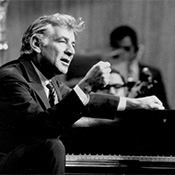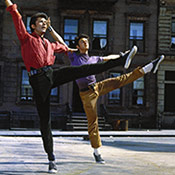
Jader Bignamini Returns
David Lewellen
PUBLISHED
Tagged Under: 2023.24 Season, Conductor
Jader Bignamini and the Milwaukee Symphony like each other. But he says the chemistry between orchestra and conductor is a mysterious thing.
“It’s like a date. Sometimes it clicks and sometimes it doesn’t,” Bignamini said recently by phone, before returning to conduct the MSO for the third time March 8–10. “When I’m in front of a new orchestra, the first five or ten minutes of rehearsal is the most difficult part. I’m studying them, but they are studying me. But the most important thing is to have respect, and to convince each other that your ideas are the best solution in that moment. Musicians understand when a conductor is well-prepared and has charisma.”
“Charisma” is a word that audiences and critics use much more often than musicians do. But Bignamini explains, “I’m excited to have an opportunity to make music. I feel happy and lucky, and I share that excitement with everyone. This is the charisma, the positive energy that you give them.”
After leading mostly Italian and Russian music on his first two visits, Bignamini’s upcoming MSO concerts will feature music by Gershwin and Bernstein, as well as Ravel, who was influenced by American jazz. “I can’t wait, because I love your orchestra so much,” he said. “I appreciate their professionalism, and they are great, great musicians.”
And the MSO musicians return that feeling. “He demands a lot of us, but it’s so rewarding,” said violist Beth Breslin, a member of the orchestra’s Artistic Liaison Committee. “He has a very clear vision and a lot of energy.”
Other instrumentalists have given her similar feedback, she said, adding, “I’m glad he’s interested in pursuing a relationship with us.”
Bignamini has been the music director of the Detroit Symphony since 2020, and has conducted many orchestras and opera companies in the United States and Europe. But most of his early professional career was spent as a clarinetist in the Orchestra Sinfonica La Verdi in Milan.
He has been a full-time conductor for more than a decade, alternating between symphonic and operatic work. “I am Italian, and I love opera,” he said, “but music is music. I don’t believe that you’re an opera conductor or a symphonic conductor. A good conductor should be able to do both.”
But, he added, his orchestral experience reminds him to keep track of musical details in the opera house. And his training on a wind instrument probably helps him explain breathing to the string section, and to connect with singers.
As a conductor, breathing is “like singing all the parts,” he said. “For me it’s very intuitive to follow every part in the orchestra, and it’s helpful to feel the music with them. There’s no sound coming out of my baton. You can’t see the connection between the music and me, but you can understand it.”
At this point, Bignamini has had a chance to explore most of the standard repertoire. Talking about his favorites, he said, “I like big orchestras. Lots of instruments to manage, more possibilities to create different kinds of sounds. American orchestras are very flexible, which is very helpful for conductors, and for audiences, too. They can create different sounds with the same orchestra.”
For example, he said, on the upcoming MSO program he will want strong rhythms and accents in the Gershwin and Bernstein pieces. “But the Ravel is very different,” he continued. “I’ll be trying for a full sound, very bright, but it doesn’t have to be rhythmic.”
And he knows that the Milwaukee Symphony will be able to achieve it. “This is an orchestra where I have a special relationship,” he said. “Every chance I have to come back, I try to find the time to be there. This is an orchestra where I work very well.”



